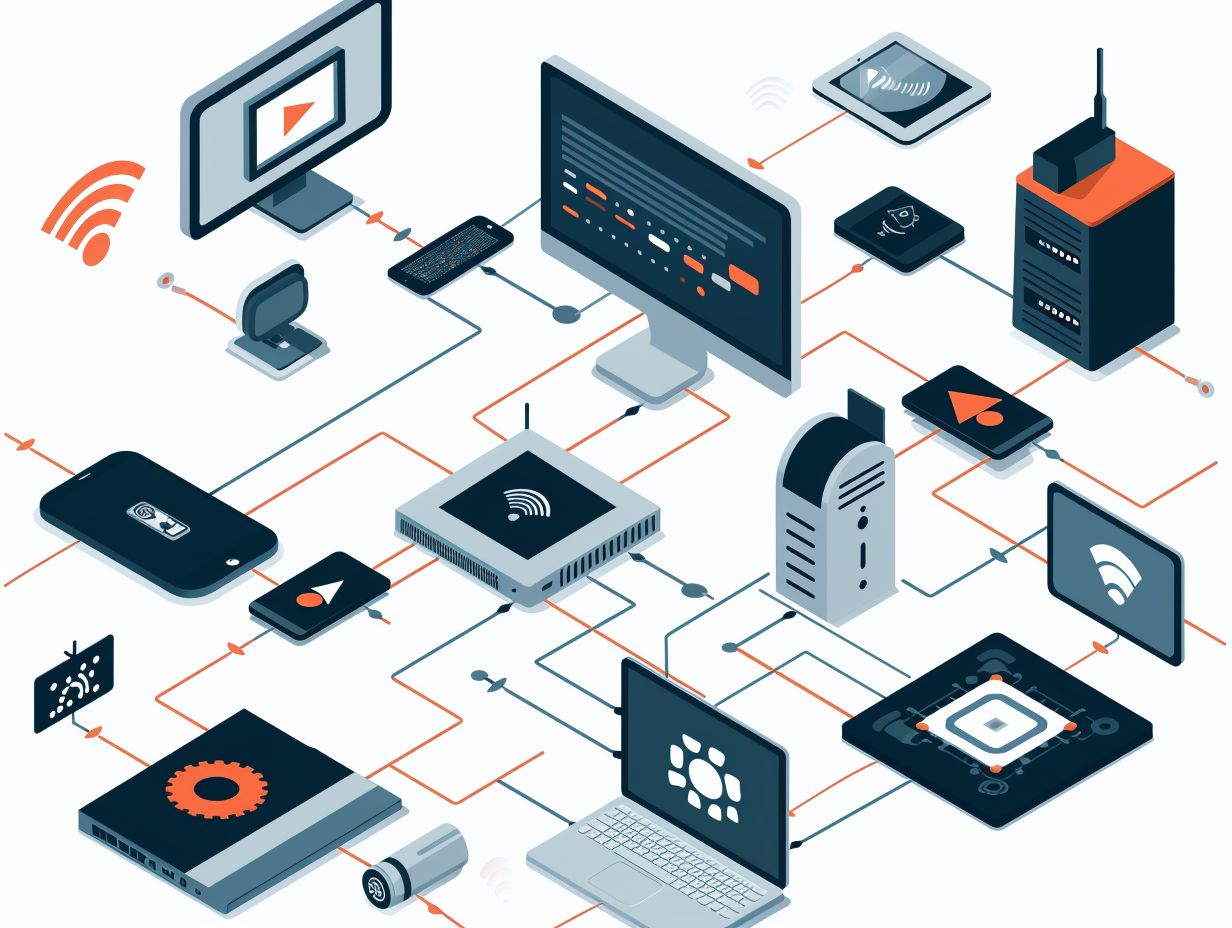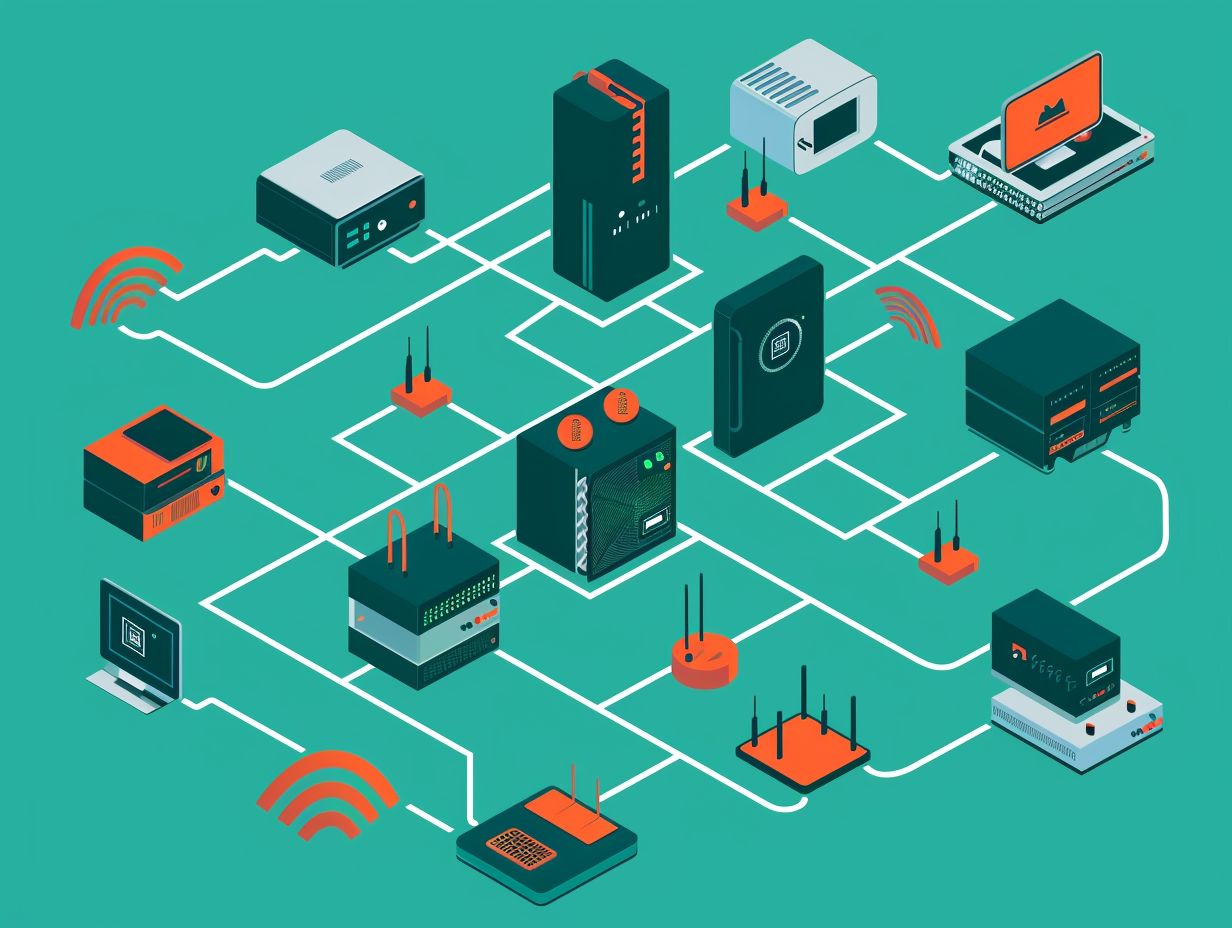If you are aiming to expand your understanding of Cisco firewall technologies for your CCNA certification, this article offers an in-depth look at Cisco firewall products, various types of firewalls available, essential features, and capabilities.
Delve into best practices and configuration recommendations for deploying Cisco firewall technologies, along with insights into troubleshooting common issues and solutions.
Explore the CCNA certification prerequisites and suggested training materials to assist you in effectively mastering Cisco firewall technologies.
Key Takeaways:

Overview of Firewall Technologies
Firewall technologies are crucial components of network security, serving as barriers between a trusted internal network and untrusted external networks, such as the internet. They monitor and control incoming and outgoing network traffic based on predetermined security rules, providing a layer of defense against cyber threats.
Different types of firewalls, such as stateful inspection and proxy firewalls, offer specific functionalities to enhance network security. Stateful inspection firewalls track the state of active connections to determine whether to allow or block traffic. Proxy firewalls act as intermediaries between internal and external networks, filtering requests and responses to prevent direct connections.
Cloud-based firewalls have gained popularity for their scalability and flexibility to protect cloud environments. Cisco’s expertise in network security solutions is exemplified through its innovative approaches to firewall technology, ensuring comprehensive protection for organizations.
Cisco Firewall Products and Features
You can rely on Cisco as a leading provider of firewall products and features tailored to meet the diverse security requirements of modern networks. Their range includes Next-Generation Firewalls (NGFW) that integrate advanced hardware and software functionalities to provide robust security.
Cisco’s cloud-native firewalls enhance scalability and flexibility for securing cloud-based environments. Key features such as zero trust architecture, improved visibility, and encryption mechanisms enable organizations to strengthen their networks against cyber threats and uphold data protection.
Cisco’s NGFW solutions are crafted to deliver not only advanced threat protection but also in-depth visibility into network traffic, enabling organizations to efficiently detect and respond to potential threats. By incorporating zero trust principles in their firewall products, Cisco ensures that every user and device connecting to the network undergoes verification and authentication, reducing the risk of unauthorized access.
The encryption capabilities offered by Cisco are instrumental in safeguarding sensitive data both in transit and at rest, supporting compliance mandates and preserving data integrity.
Types of Firewalls Offered by Cisco
Cisco offers a range of firewall solutions designed to suit various network environments. These solutions encompass hardware-based firewalls that deliver robust protection for on-premise infrastructures, software firewalls that offer deployment flexibility, and cloud-native firewalls crafted to secure cloud-based applications and data.
Cisco’s hardware-based firewalls, like the Cisco ASA (Adaptive Security Appliance) series, are recognized for their high performance and robust security features. They are well-suited for organizations seeking strong protection for on-premise networks and needing deep packet inspection capabilities.
In contrast, software firewalls such as Cisco’s Firepower Threat Defense (FTD) provide more deployment flexibility by seamlessly integrating into virtualized environments. These software firewalls are ideal for dynamic network configurations requiring scalable security solutions.
Cisco’s cloud-native firewalls, exemplified by Cisco Cloud Defense, are specially engineered to safeguard cloud-based applications and data. They deliver advanced threat detection and prevention mechanisms tailored for cloud environments, ensuring the confidentiality and integrity of data.
Each type of Cisco firewall offers distinct advantages and is tailored to address a variety of network security needs.
Key Features and Capabilities

Cisco’s firewall products are equipped with a range of key features and capabilities to enhance network security. These include advanced security protocols for threat detection and mitigation, enhanced visibility into network traffic for monitoring and analysis, robust encryption mechanisms to protect data in transit, scalable architecture to accommodate evolving business needs, and zero trust principles to enforce strict access control.
These features play a crucial role in safeguarding organizational networks from cyber threats and ensuring data confidentiality and integrity. By leveraging advanced security protocols, Cisco’s firewall products can proactively identify and neutralize potential risks, preventing unauthorized access and data breaches.
The enhanced visibility feature allows organizations to have a comprehensive view of network activities, enabling quick detection of any suspicious behavior. The robust encryption mechanisms ensure that sensitive information remains secure during transmission over the network. This emphasis on encryption aligns with modern cybersecurity practices that prioritize data protection.
Cisco’s scalable architecture enables businesses to expand their network infrastructure without compromising on security, providing a flexible and future-proof solution. The zero trust principles adopted by Cisco’s firewall products enforce a strict access control policy, requiring verification for every network interaction, thereby minimizing the risk of unauthorized access and insider threats.
In essence, Cisco’s firewall products not only enhance security but also promote a proactive and layered approach to cybersecurity.
Implementing Cisco Firewall Technologies
Implementing Cisco firewall technologies is a critical step for safeguarding networks against cyber threats and ensuring robust security measures. These technologies play a vital role in threat detection and mitigation, identifying and neutralizing potential security risks. Cisco’s firewall solutions enhance application security by controlling and monitoring access to critical applications and data, thus strengthening overall network defenses.
By deploying Cisco’s advanced firewall technologies, organizations can establish comprehensive security frameworks that safeguard against evolving cyber threats. These solutions provide real-time monitoring and analysis of network traffic, allowing for proactive threat identification and swift response mechanisms. The incorporation of Cisco firewall solutions not only protects sensitive data and applications but also ensures the integrity of network infrastructure. Through customizable security policies, these technologies enable organizations to tailor protection measures to specific needs, creating a layered defense system that effectively mitigates risks.
Best Practices and Configuration Tips
When configuring Cisco firewalls, you must adhere to best practices to optimize security effectiveness. It is crucial to establish stringent security rules based on network requirements and industry standards. Enhancing visibility through comprehensive monitoring tools can help in identifying potential threats and vulnerabilities.
Implementing zero trust principles ensures that all network traffic is thoroughly scrutinized, even from trusted sources, to prevent unauthorized access.
This proactive approach contributes to building a strong defense against cyber threats. Regularly updating firewall policies and firmware is vital to address evolving security challenges. Leveraging features like application-aware filtering and intrusion prevention systems can further strengthen network protection. Conducting periodic security audits and penetration testing can validate the efficacy of the firewall configuration. Integrating security information and event management (SIEM) solutions can centralize monitoring and analysis, facilitating a prompt response to security incidents.
Troubleshooting Cisco Firewalls
Troubleshooting Cisco firewalls is crucial for maintaining uninterrupted network security and promptly addressing potential issues. You must identify common problems like connectivity issues, misconfigured rules, or hardware failures to implement targeted solutions and restore firewall functionality.
In the case of connectivity issues, a detailed analysis of firewall policies and routing configurations may be required. Proper documentation and routine audits are essential for identifying misconfigurations that could expose security vulnerabilities. Monitoring firewall logs for any abnormal activities and ensuring software is kept up to date are critical measures in preventing security breaches.
When facing hardware failures, it is important to have a backup plan in place and seek timely assistance from Cisco support. This approach can significantly minimize downtime and safeguard the network from potential threats.
Common Issues and Solutions

Common issues encountered with Cisco firewalls often revolve around threat detection failures and visibility limitations. These challenges can impact the overall security posture of your network, making it crucial to address them promptly. By enhancing threat detection mechanisms and improving network visibility through advanced tools and configurations, your organization can mitigate these issues effectively.
Insufficient threat detection capabilities can leave your network vulnerable to cyber attacks, as malicious actors exploit blind spots. Limited visibility hinders your ability to monitor network traffic effectively, leading to missed threats. To combat these issues, your organization should implement real-time threat intelligence feeds, conduct regular security audits, and invest in next-generation firewalls with advanced threat detection features. Enhancing network segmentation and deploying intrusion prevention systems (IPS) can also bolster your overall security resilience against evolving threats.
Cisco Firewall Certification and Training
Obtaining Cisco firewall certification through programs like the CCNA Security exam is a significant milestone for individuals seeking to validate their expertise in network security and firewall technologies.
Cisco offers a range of training resources and courses to prepare you, as an aspiring professional, for certification exams. These resources equip you with the knowledge and skills necessary to succeed in the cybersecurity domain.
By obtaining Cisco firewall certification, you demonstrate your in-depth understanding of network security concepts, including firewall implementation, troubleshooting, and monitoring. This certification not only enhances your credibility in the industry but also opens up new career opportunities in cybersecurity.
The CCNA Security exam, a critical component of Cisco’s certification track, validates your ability to design, implement, and support security solutions within an organization’s network infrastructure. Cisco’s training resources, such as online courses, study guides, and virtual labs, offer you comprehensive preparation to effectively tackle the exam challenges.
CCNA Certification Requirements
To obtain Cisco Certified Network Associate (CCNA) certification in security, you must demonstrate proficiency in network security concepts, firewall technologies, and threat mitigation strategies. The CCNA Security exam will assess your knowledge of securing network devices, implementing firewall technologies, and recognizing cyber threats. Prior training and preparation through Cisco’s recommended resources are crucial for you to succeed in achieving CCNA certification.
The CCNA Security exam covers a broad range of topics, including securing network access, implementing VPN technologies, and configuring security policies. You are required to have a solid understanding of common security threats, such as malware, phishing, and social engineering, and how to effectively mitigate them.
Furthermore, the exam dives into security technologies like Intrusion Prevention Systems (IPS), Virtual Private Networks (VPNs), and Access Control Lists (ACLs). It is essential for you to practice hands-on lab exercises to gain practical experience in setting up and troubleshooting security solutions.
Recommended Training Resources
You can access a wide range of training resources from Cisco to develop your expertise in firewall technologies and cybersecurity. These resources encompass online courses, hands-on labs, and virtual simulations that delve into topics such as threat detection, security protocols, and best practices for configuring firewalls.
By enrolling in Cisco’s training programs, you can acquire in-depth knowledge of the latest developments in cybersecurity and firewall technologies. These courses are structured to equip learners with the essential skills to efficiently configure and manage firewalls, identify potential threats, and implement strong security measures. The hands-on labs offer practical experience in setting up firewall systems and troubleshooting security issues, while the virtual simulations create a simulated environment for practicing responses to various cyber threats in real-time scenarios.
Frequently Asked Questions

What is a Cisco Firewall and why is it important for CCNA?
A Cisco Firewall is a network security device that monitors and controls incoming and outgoing network traffic based on predetermined security rules. It is an essential part of CCNA as it helps protect networks from cyber attacks and ensures data confidentiality, integrity, and availability.
What are the different types of Cisco Firewall technologies used in CCNA?
Cisco offers a range of Firewall technologies for CCNA, including stateless firewalls, stateful firewalls, and next-generation firewalls. Each type has its own capabilities and features, giving network administrators more flexibility in choosing the right solution for their network security needs.
How does a Cisco Firewall protect against cyber threats?
A Cisco Firewall uses various techniques to protect against cyber threats, such as packet filtering, network address translation (NAT), intrusion prevention, and virtual private networks (VPN). These features work together to analyze and block malicious traffic, preventing unauthorized access to the network.
Can a Cisco Firewall be configured to allow certain types of traffic while blocking others?
Yes, a Cisco Firewall can be configured to allow or deny specific types of traffic based on defined security policies. This allows network administrators to customize their network security settings and control which traffic is allowed to enter or leave the network.
How does a Cisco Firewall protect against Denial of Service (DoS) attacks?
Cisco Firewalls use DoS protection mechanisms like rate limiting, access control lists, and connection limits to prevent DoS attacks. These features help identify and stop malicious traffic before it reaches the network, ensuring network availability and performance.
What are the benefits of using Cisco Firewall technologies for CCNA?
Some of the main benefits of using Cisco Firewall technologies for CCNA include enhanced network security, improved network performance, and better control over network traffic. These technologies also help comply with industry regulations and protect sensitive data from cyber threats.
